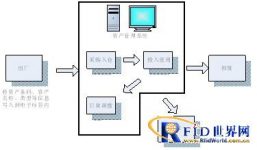
Application of UHF RFID Technology in Asset Management
[ad_1]
I. Introduction
RFID technology is the fastest-growing high-tech technology in the 21st century. With the integration of traditional networks, RFID technology shows great market application potential, and RFID asset management is an important aspect of RFID applications. However, the application of RFID technology in communication equipment and power equipment asset management is still rare. Therefore, there are no RFID products that can be directly applied to communication equipment and power equipment asset management on the market. RFID technology is used in communication equipment and power equipment management. The application of has expansion significance.
Assets in the communications and power industries are characterized by large numbers, wide distribution, and frequent changes. Asset management currently uses traditional manual management methods and means. Data collection and entry have always been manual operations, which are inefficient and have high error rates. The physical information and the management system information cannot be synchronized in real time. As a bridge between the physical world and existing IT systems, RFID technology uses GPRS wireless transmission technology to effectively integrate daily asset management activities with asset management systems, so as to achieve real-time synchronization of physical information and system information. Therefore, communication operation companies urgently need to set up an RFID asset management system spread over each communication base station to realize centralized real-time automatic monitoring and management of communication equipment.
The following introduces the application of RFID technology in asset management in the communications industry. The application of RFID in asset management in the power industry or other industries is similar.
2. System implementation plan
1. System workflow
Asset management includes operations such as the addition, allocation, idleness, scrapping, maintenance, and inventory of assets. It includes the entire process of equipment from leaving the factory and putting into use to scrapping out of use. The specific workflow is shown in Figure 1:

Figure 1 System workflow
When the equipment leaves the factory, an electronic tag will be installed, and the barcode number, name, equipment type and other information of the asset will be written in the tag, and the information will be recorded in the central server. The equipment becomes an asset when it is purchased. After it is put into use, there will be normal deployment, maintenance, and scrapping operations. The reader will read the electronic tag on the asset every time it enters and exits from the base station or warehouse, and the tag information It is transmitted to the central server via GPRS to complete the tracking and management of assets.
2. The working principle of the system
The working status of the reader is controlled by the access sensor. When the door is opened, the power amplifier is turned on to communicate with the electronic tag carried by the asset. When an electronic tag enters the recognition range and is read, the total number of tags is displayed through sound and light prompts and LED display to inform the staff that the asset information has been identified and sent to the background management system via GPRS.
Each asset is attached with an electronic tag with a unique ID number and corresponding asset-related information (such as asset number, name, model, etc.). When the asset enters the RFID antenna identification area, the antenna activates the electronic tag circuit by sending a microwave signal At the same time, the electronic tag sends echo signals, and the two exchanges two-way data. The reader obtains the relevant information of the asset. After confirmation, the relevant information of the asset is uploaded to the RFID system server through the GPRS module in real time, and the server performs corresponding data Format conversion, filtering and related follow-up processing are sent to the asset management auxiliary system as a data source for other system data statistics, query and other functions to realize real-time monitoring, recording and automatic update of change information in the daily asset management (as shown in Figure 2 Show).

Figure 2 System frame diagram
[ad_2]



